Brioche is a very rich and delectable bread. In fact, this particular recipe utilizes a 70 percent butter-to-flour ratio so it would definitely be considered a “rich man’s brioche”. In France, they make two types: rich man’s and poor man’s brioche — the difference being the amount of butter.
I made Brioche this past Easter and my oldest son loved it. He said “Mom, I wouldn’t mind if you made this bread again”. That’s a teenager’s way of saying he likes it. I took the hint and made it again.
Shaping Brioche: Brioche can be made into many shapes and forms. It is often made as a petite brioche à tête, a small roll with a topknot; it can be baked in loaf pans and sliced like any other bread; or it may be shaped into torpedo rolls and eaten on the side with foie gras or other rich delights. It also makes wonderful French toast and bread pudding.
Using a Master Formula for Brioche: This particular formula utilizes a sponge that is really a type of poolish, made with milk. It is thicker than other types of poolish. The poolish has enough yeast so that no additional yeast is required.
Making Brioche
The master formula for this brioche is found in Peter Reinhart’s Crust and Crumb.
Yield: 3 loaves, or up to 4 dozen small rolls. I’m using a smaller fluted pan to mold the brioche so it will make about 3 brioches.
Ingredients (Sponge):
- 1 teaspoon Instant Yeast
- 1/2 cup (4 ounces) lukewarm milk (90°F)
- 1 cup (4.5 ounces) unbleached bread flour
Ingredients (Dough):
- 3 1/2 cups (16 ounces) unbleached bread flour
- 2 tablespoons (1 ounce) sugar
- 1 teaspoon (0.25 ounce) salt
- 5 large eggs (8 ounces), cold, plus 1 large egg for egg wash
- 1 1/2 cups sponge (from above; use all 8.6 ounces)
- 1 3/4 cups (14 ounces) unsalted butter, softened
- Vegetable oil cooking spray (optional)
- Melted butter and flour for the molds (Tip: to coat the pan melt 3 parts butter and stir in 1 part flour (by measure, not by weight). Brush this on pans whenever you need a buttery pan release. The flour keeps the butter from burning.
Directions:
To make the sponge, stir the yeast into the milk in a mixing bowl. Add the flour and stir until smooth. Cover the bowl with plastic wrap, and allow the sponge to ferment at room temperature for 1 to 2 hours. It will become very bubbly.
In a mixing bowl or the bowl of an electric mixer with a paddle attachment, combine the flour, sugar, salt, 5 eggs, and sponge.
Note: If you have a heavy-duty mixer, now is the time to use it. Mixing this dough by hand is quite a workout.
Mixing the dough by machine:
Mix it on low speed for about 2 minutes, till a smooth dough is formed. Cut the butter into 3 pieces and beat in 1 piece at a time at medium-low speed till each is absorbed. Continue beating at the same speed till the dough is smooth, about 6 minutes. It will be very soft and sticky.
Mixing the dough by hand:
Gradually combine all the ingredients and beat vigorously with a wooden or metal spoon for about 10 minutes, to make a smooth, wet dough
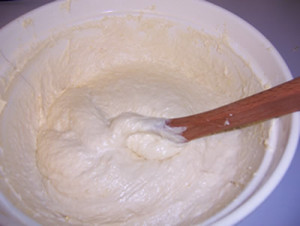
Mist the top of the dough with cooking spray, cover the bowl with plastic wrap, and place the bowl in the refrigerator overnight (or for a minimum of 5 hours). The dough will firm up considerably as it retards.
Remove the dough from the refrigerator and shape it, while it is still cold, into loaves, rolls, or molded petites brioches à tête.
Grease the molds well with cooking spray or with melted butter and flour. Mist the top of the dough with cooking spray, cover it with plastic wrap or enclose it in a plastic bag, and let rise at room temperature for about 2 hours, or till nearly doubled in size.
Position on oven rack in the center of the oven and preheat to 375°F for a large, full-size brioche, 400°F for smaller loaves. Beat the remaining egg till smooth and brush it on the tops of the brioche, taking care not to let it drip down the sides of the molds.
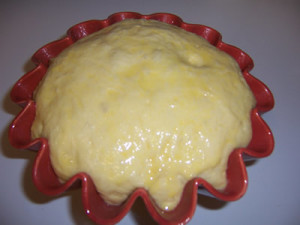
Bake 35 to 45 minutes for loaves, 20 to 25 minutes for small rolls, until a rich, deep gold. If using molds, remove the rolls 1 or 2 minutes after they come out of the oven, taking care not to tear them (use a small knife to loosen them from the side walls). Cool the brioche on a rack for 20 to 40 minutes, depending on size, before eating.
Happy Baking!
Cathy
If you’d like to try a different Brioche Recipe, check out these No Knead Breads.
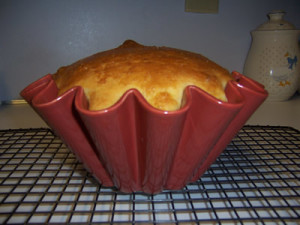
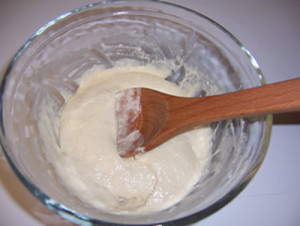
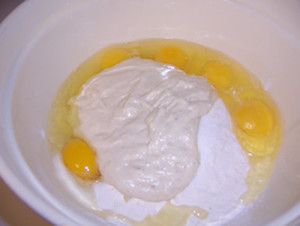
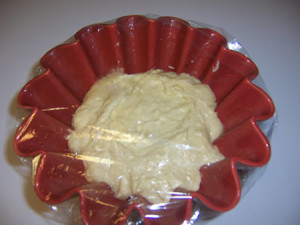
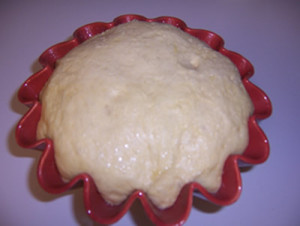
Anonymous says
Yo Mom the blog looks shaweeeet!
– Alex
Dru says
I love this site and the photos are especially helpful. Thanks! The brioche will go in the oven tomorrow.
Dru
http://www.tightwadtravel.blogspot.com
Cathy (breadexperience) says
Hi Dru, I’m so glad you like my site. How did you brioche turn out?
Anonymous says
hello, i was just looking at this recipe. it looks really good and very easy to make.
is this the bread that is a bit sweet? i have bought brioche buns before, which i love, but can not find them where is live. would this be the same bread?
Cathy (breadexperience) says
This recipe is easy to make. It is a little bit sweet, but mostly rich and buttery due to the amount of butter used. It’s very good!
Anonymous says
Thanks for the recipe…I am sure it is wonderful…Yes the photos help a lot…
Anonymous says
This one looks wonderful! I would like to know if you’ve ever added other ingredients like garlic or cheese. Would this be a good recipe to do that? Thanks!
Cathy (breadexperience) says
Hi! I haven’t added cheese or garlic to this recipe, but I have made potato and garlic bread and cheese bread. Both are delicious.
Meghs says
Beautiful bread… Just love it. And your recipe is perfect 🙂
Cathy says
Thanks Meghs! Glad you like it!
Sybil Garrison says
Hi Cathy,
I wonder if you could make it with sprouted spelt flour?
I use neither all-purpose flour nor bread flour in my baking.
Or maybe you have another recipe for brioche with spelt?
Thanks.
Cathy says
Hi Sybil,
I do not currently have a brioche recipe that utilizes spelt, but that’s a fabulous idea! If you use sprouted spelt flour or whole grain spelt flour, it won’t be as light, but the sponge will help. Typically, you use less hydration with spelt, but more with sprouted grains so this might require a bit of experimentation to find the right amount of liquid to use. With this recipe, I would try substituting the flour first without changing anything else and make adjustments from there. This sounds like a fun experiment to try. Happy Baking!
Sybil Garrison says
Thank you. I posted the next comment before I realized you had already answered. I am looking at several of your recipes at the same time. I have made the Kamut baguettes very successfully several times now, but haven’t made any other recipe. I’m French and would love to be able to make a decent brioche. I will let you know the results.
Cathy says
Hi Sybil, thanks for trying some of my recipes. Do let me know how the spelt version turns out. Happy Holidays!
Sybil Garrison says
Hi Cathy,
I am currently enjoying brioche for breakfast… So I made your recipe using the One Degre Organic sprouted spelt flour. I ended up letting the sponge ferment overnight (I used an extra 0.5 oz milk). I put the dough together yesterday morning around 10 am and kept it in the fridge until 4 pm at which point I shaped it in two loaves. I let them rise a full 3 hours (it wasn’t quite ready after 2 hours).
I baked the smaller one for 35 minutes and the larger one for 40 minutes.
I can only compare with the brioches of my youth back in France which were made with white flour.
My brioches turned out very well, so delicious with butter and jam. A nice crumb, a deliciously buttery crust, altogether a success. So, you can definitely use spelt flour.
Check your Facebook page for photos of both the einkorn loaf made with spelt and the brioche made with spelt.
Thanks again for the great recipes!
Sybil
Sybil Garrison says
Would it be possible to make it with spelt flour instead of bread flour? Thanks for any advice.